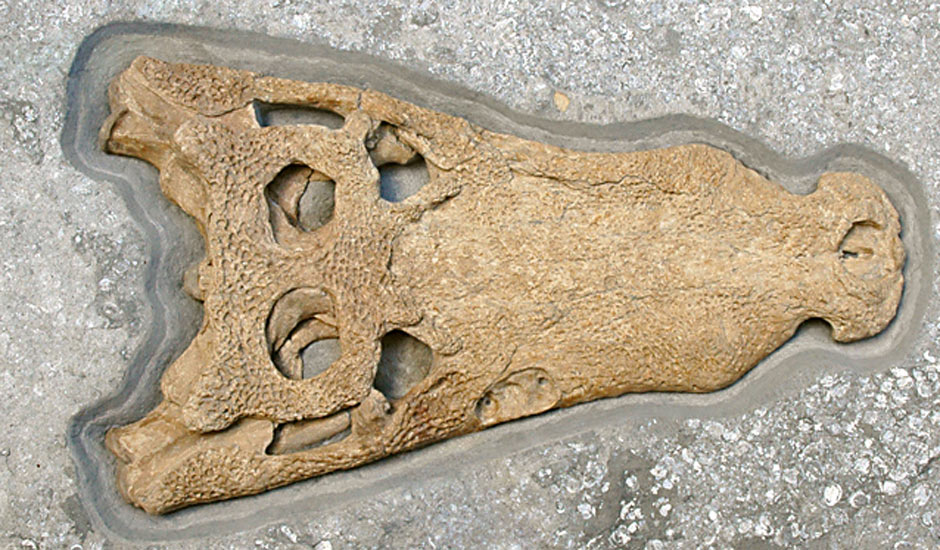 |
| A stretch of cliff on the Jurassic Coast |
The name itself is misleading, as the rocks which span the length of coast, actually encompass the whole of the Mesozoic era, giving us a fantastic insight into life throughout the Triassic, Jurassic and Cretaceous periods.
Fossils have been found in the rocks since the 1500s, but it was not until Mary Anning made discoveries of giant, extinct reptiles in the 1820s, that the area became famous and palaeontologists swarmed onto the beaches of Charmouth and Lyme Regis in search of denizens of past eras. Families and professional collectors alike still frequent the cliffs and their activities have unearthed many different creatures.
Some of the most famous are the plesiosaurs and ichthyosaurs, alongside species of pterosaurs, ammonites and belemnites. Even a few dinosaurs have been found. Now a crocodile has been added to this diverse mix. In 2007, the Dorset coast experienced a massive rockfall exposing the skull of a mysterious, 200 million year old creature. It was chanced upon after a routine check of the levels of erosion in the area.
 |
| The 200 million year old skull of the crocodile Goniopholis kiplingi |
The preserved, yet somewhat flattened cranium, was handed over to palaeontologists at Bristol University. Five years of analysis and exhaustive comparisons to other known large vertebrates from the area allowed them to conclude that the skull came from a completely new species of crocodile which they named Goniopholis kiplingi. The genus name comes from Greek and translates as 'angled scale' while the species name honors Rudyard Kipling, the author, whose stories include 'The Jungle Book.'
The metre long skull probably came from a creature which had a total length of 3.5 metres. Its size suggests that it was probably a swamp dweller, rather than marine and therefore it may have led a lifestyle similar to that of a Nile crocodile. 'This is a pretty remarkable specimen. It's not crushed, it's in good condition and it's a new species' Mark Benton, one of the Bristol palaentologists resposible for the analysis of the skull told The Guardian. 'This just goes to show the benefits of eternal vigilance even in these well-picked-over areas.'